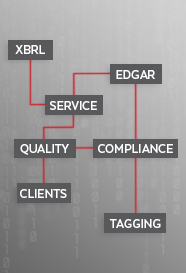A dimension is a term used in XBRL very often, yet many struggle to understand what dimensions are in XBRL tagging. RDG is hoping to help clarify what exactly a dimension is. We will also have a follow-up post about proper use and placement of dimensions.
Dimensions are used in XBRL to add depth to particular numeric values that can’t be fully expressed using only the US-GAAP concept alone. Dimensional tagging is needed when facts need additional context applied beyond the concept and date.
Dimensions consist of two parts: “Axes” and “Members”. The Axis of the dimension acting as an umbrella for a category of items, and the Member describing the specific item.
For example, the Property, Plant, and Equipment table will have most of the line items tagged with the same US-GAAP concept, even when each line item clearly represents a different category of PP&E. So, to add the necessary depth and to distinguish each line item from the other line items, a dimension would be added.
In this case, the axis “Property, Plant and Equipment, Type [Axis]” would be added to each line item along with a “Member” such as “Land (Member) or Building (Member)”. Most of the time, the US-GAAP taxonomy’s structure will dictate how and when dimensions are used. The SEC has stated that it would prefer the pre-defined dimension schedules to be utilized when possible, but it does allow for the creation of unique dimensions if they are needed.
Another example of the use of dimensions is in The Statement of Changes in Equity. The Statement of Changes in Equity differs from the other main financial statements in that each line item is separated into constituent values that amount to the total in the final column. To differentiate the constituent values in each column, a dimension is applied to each of the facts in addition to the concepts and dates. This is done by adding an Axis and Member to the particular fact.
See example below:




